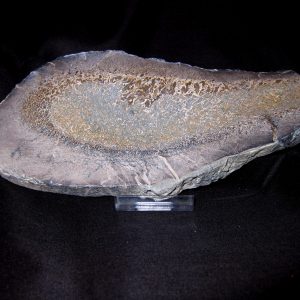Description
- Metaidetes
- Lower Cambrian
- Ajax Limestone
- Beltana, Flinders Range
- Southern Australia
- Specimen measures approx. 4 3/4″ wide
Archaeocyatha (or archaeocyathids “ancient cups”) is a taxon of extinct, sessile, reef-building marine organisms of warm tropical and subtropical waters that lived during the early (lower) Cambrian Period. It is believed that the centre of the Archaeocyatha origin are now located in East Siberia, where they are first known from the beginning of the Tommotian Age of the Cambrian, 525 million years ago (mya). In other regions of the world, they appeared much later, during the Atdabanian, and quickly diversified into over a hundred families. They became the planet’s very first reef-building animals and are an index fossil for the Lower Cambrian worldwide.






